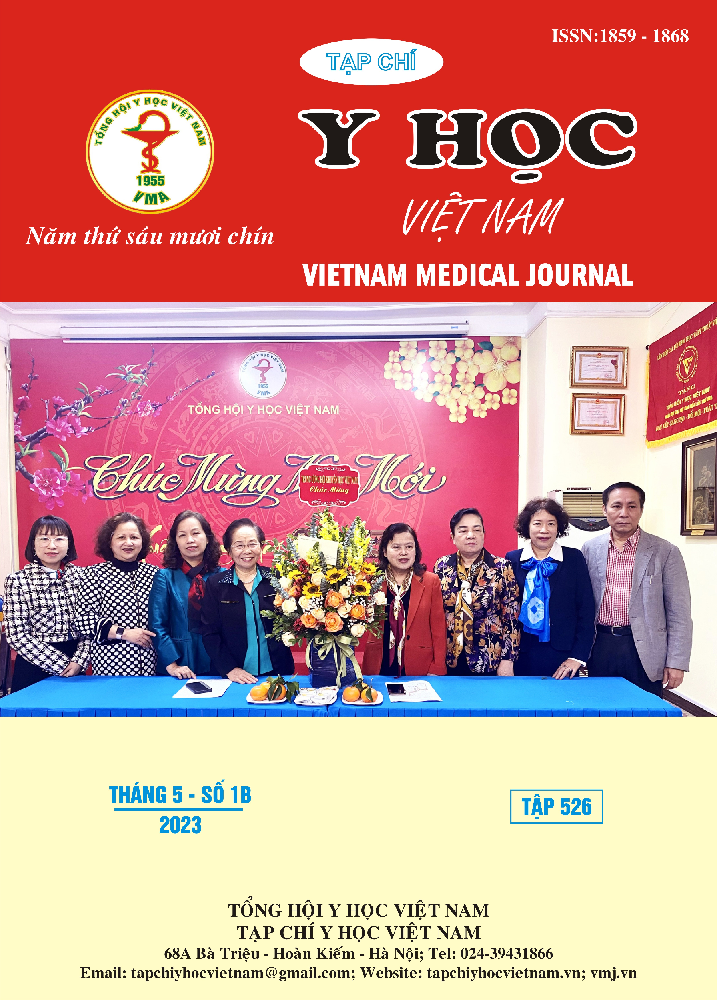PREVALENCE AND CHARACTERISTICS OF FALLS IN THE ELDERLY WITH KNEE OSTEOARTHRITIS AT UNIVERSITY MEDICAL CENTER, HO CHI MINH CITY
Main Article Content
Abstract
Objective: The aim of this study was to determine the prevalence, frequency, mechanism, activities at the time of falls, and injuries sustained from falls in elderly patients with Knee Osteoarthritis (KOA) at University Medical Center, Ho Chi Minh City. Method: We conducted a cross-sectional study that involved 636 elderly patients (≥60 years) from January 2022 to June 2022 at the Rheumatology clinic and the Geriatrics clinic of University Medical Center HCMC. We included 318 patients with KOA and 318 patients without KOA. Demographic data, co-morbidities, current medications, and characteristics of falls in the past 12 months were collected from both groups. Results: The prevalence of falls and recurrent falls was significantly higher in elderly patients with KOA than in the control group (23.3% vs. 16.7%, p=0.037 and 14.2% vs. 3.5%, p<0.001, respectively). Elderly patients with KOA were more likely to fall due to loss of balance compared to the group without KOA (47.3% vs. 18.9%, p<0.001). The risk of fracture due to falls was also higher in patients with KOA (25.7% vs. 13.2%, p=0.016). There was no significant difference in age, multi-morbidity status, and activities at the time of falls in patients with and without KOA. Conclusion: This study highlights that elderly patients with KOA have a higher prevalence of falls, particularly due to loss of balance, and are at an increased risk of fractures due to falls. These findings suggest the need for falls prevention strategies in this population, with a focus on reducing the risk of falls and fractures in patients with KOA.
Article Details
Keywords
falling, knee osteoarthritis, elderly.
References
2. SR Lord C Sherrington, HB Menz (2003), Falls in Older People: Risk Factors and Strategies for Prevention. BMJ Publishing Group Ltd.
3. Gottschalk Sophie, König Hans-Helmut, Schwenk Michael, et al. (2020), "Mediating factors on the association between fear of falling and health-related quality of life in community-dwelling German older people: a cross-sectional study". BMC Geriatrics, 20 (1), pp.401.
4. Thibaud Marie, Bloch Frédéric, Tournoux-Facon Caroline, et al. (2012), "Impact of physical activity and sedentary behaviour on fall risks in older people: a systematic review and meta-analysis of observational studies". European Review of Aging Physical Activity, 9 (1), pp.5-15.
5. Tasci Bozbas Gulnur, Sendur Omer Faruk, Aydemir Ali Hakan (2017), "Primary knee osteoarthritis increases the risk of falling". Journal of back musculoskeletal rehabilitation, 30 (4), pp.785-789.
6. Doré A. L., Golightly Y. M., Mercer V. S., et al. (2015), "Lower-extremity osteoarthritis and the risk of falls in a community-based longitudinal study of adults with and without osteoarthritis". Arthritis Care Res (Hoboken), 67 (5), pp.633-9.
7. van Schoor N. M., Dennison E., Castell M. V., et al. (2020), "Clinical osteoarthritis of the hip and knee and fall risk: The role of low physical functioning and pain medication". Semin Arthritis Rheum, 50 (3), pp.380-386.
8. Smith T O, Higson E, Pearson M, Mansfield M. (2018), "Is there an increased risk of falls and fractures in people with early diagnosed hip and knee osteoarthritis? Data from the Osteoarthritis Initiative.". Int J Rheum Dis, 21(6), 1193-1201.
9. Nevitt M C, Tolstykh I, Shakoor N, et al. (2016), "Symptoms of knee instability as risk factors for recurrent falls". Arthritis Care Res, 68(8), 1089-1097.


